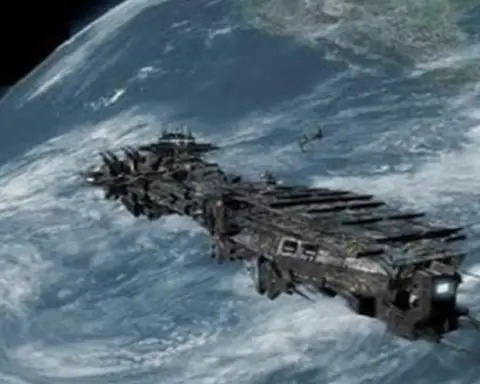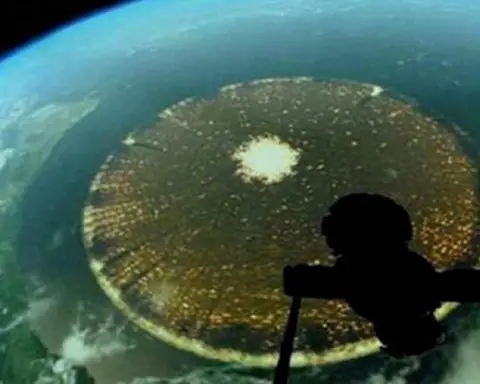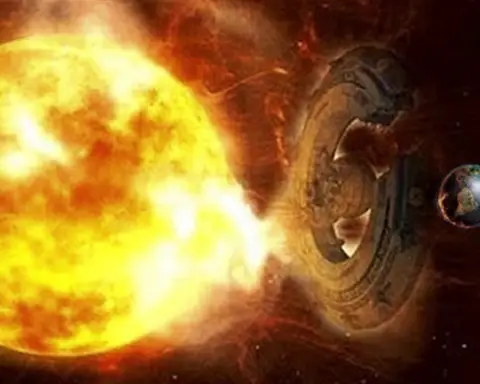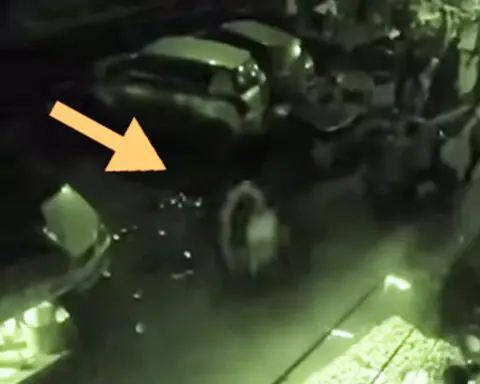Huge monoliths have been discovered on celestial bodies around our solar system, and scientists are stumped as to what they symbolize and where they came from. Could these be relics from a long-forgotten martian civilization?
Space enthusiasts and anomaly hunters are bringing more and more unusual features from across the Solar System to light, fueling speculation about former civilizations that once inhabited the blue dot and other celestial bodies in its vicinity long before humans existed, or before our collective memory was erased.
There is, nevertheless, plenty of data to back up the aforementioned claim, even if conventional science does not consider it conclusive proof. Not yet, at least.
The monolith from the martian surface photographed by the HiRISE camera on board the Mars Reconnaissance Orbiter from about 180 miles (300 kilometers) above is one of the most unusual components.

The interesting item protrudes from the surface of Mars and appears to be precisely rectangular, standing erect and measuring approximately 5 meters across.
The monoliths seeded on Earth and the moon by aliens in the sci-fi film “2001: A Space Odyssey” have a remarkable resemblance to the stone block. It’s an intriguing piece that reminds me of a past martian society that was advanced enough to change the entire surface of their planet. But why aren’t scientists on board with this theory, and why is there so little interest in it?
The most convenient explanation was that the supposed monolith had broken free from the martian bedrock and slid through a crack, forming the rectangular shape it had. Although it is true that the ‘monolith’ on Mars is found towards the bottom of a chasm, is this theory sufficient to verify its perfect shape?

“It would be unwise to refer to it as a ‘monolith’ or ‘structure’ because that indicates something manmade, such as it being placed there by someone,” Yisrael Spinoza, a spokesman for the HiRISE department, stated.
“In truth, this boulder was most likely formed by breaking away from the bedrock to form a rectangular-shaped feature.”
Scientists can use the monolith’s placement at the bottom of a cliff as an alibi to establish their case. They claim that if the alien theory is correct, they [the ETs] would relocate the fabled monolith to a less-obstructed location.
However, since no one from Earth has ever set foot on Mars, and all of the information we have comes from very authoritarian agencies known for only revealing the positive side of the story, it’s difficult to get a precise picture of what’s going on.
Fortunately for us, another mysterious monolith can be found on a small celestial planet with a radius of around 7 miles (11 kilometers), this time in an area with no obstructions.
Phobos is one of Mars’ two moons, the other being Demos, which is its smaller sibling.
It has an uneven shape that makes it appear to be an asteroid that fell into Mars’ gravitational grasp a long time ago, but due to its peculiar properties, space enthusiasts have proposed that Phobos is a manmade object, most likely employed as a space station by an ancient martian civilization.
Scientists have no idea how Mars’ two moons got there, and they have no idea what the mysterious rock on Phobos is.
What is definite, though, is NASA’s desire to place an unmanned mission on this little moon, which is near to the marked monolith. They don’t mention alien connotations, but rather the scientific benefits it could provide for a future manned Mars expedition.

Buzz Aldrin, the second man to walk on the Moon, is one of many seeking to enhance humanity’s knowledge of these space objects. He is a proponent of space exploration and appears to have established definitions for what can be found on Mars and on Phobos.
“We must bravely go where no man has gone before. Fly by comets, visit asteroids, and visit Mars’ moon. On this small potato-shaped asteroid that orbits Mars once every 7 hours, there’s a monolith, an intriguing structure.
People will ask, “Who put that there?” when they learn about it. “Who put that there?” says the narrator.
The monolith on Phobos is a true anomaly that is difficult to refute. It stretches 90 meters above ground level and is located in a barren area of Phobos, raising more doubts about its origins.
It’s possible that this object is connected to the one discovered on Mars. They both allude to a possible advanced martian civilization(s) that managed to include its moon into their planetary expanse in the ancient past.

The most likely scenario is that the monoliths were used to beam data, although some wild theories include that they were used to open temporal rifts in space and time.
Because we haven’t gone there to thoroughly investigate the artifacts, no one can establish or deny the foregoing statements; hence, all hypotheses remain feasible for the time being. However, the future is steadily reshaping our world in ways we could never have imagined. In a nutshell, we may rapidly find ourselves immersed in our own imagination.
Since science fiction scenarios are becoming more popular, I feel the monoliths on Mars and Phobos are the ideal imaginative exercise that could one day become reality. After all, science would be meaningless without fiction.
How do you feel about this? Natural structures from the farthest reaches of the universe? Or are they more likely to be man-made constructions with a specific purpose?






